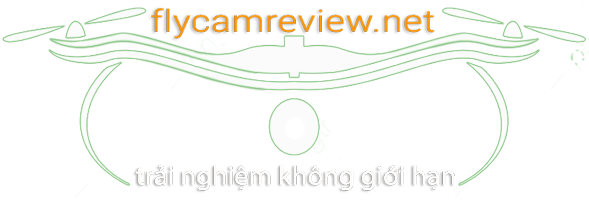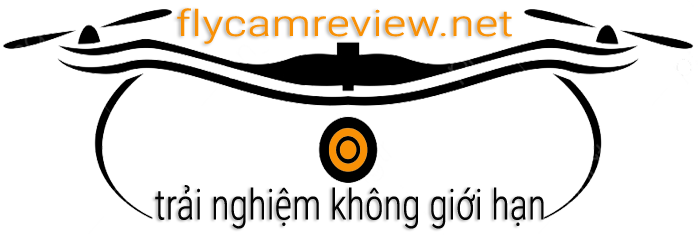Have you ever stared blankly at your screen, struggling to find the right words to prompt your Chat AI? You’re not alone. Crafting effective prompts is crucial for getting the best results from tools like ChatGPT, Bard, or Claude. This guide will dive deep into the world of Wordtune prompts for Chat AI, helping you unlock the full potential of these powerful tools and generate high-quality, relevant content.
What Are Wordtune Prompts and Why Do They Matter for Chat AI?
Wordtune prompts are carefully crafted text inputs designed to elicit specific and desired responses from Chat AI. Unlike vague or general instructions, these prompts are designed to be precise, guiding the AI to understand the task, tone, and style of response needed. They are more than just simple questions; they’re a framework for communication between you and the AI.
Why are they so important? Well, a bad prompt can lead to a generic, irrelevant or even incorrect output. Conversely, a well-structured Wordtune prompt can unlock the AI’s ability to create incredibly valuable content, from creative writing to data analysis. The right prompt can save time, improve quality and ultimately, boost your productivity when using Chat AI.
Key Elements of Effective Wordtune Prompts
To truly master the art of Wordtune prompts, it’s important to understand the key ingredients that make them work. Consider these elements to write truly outstanding prompts:
- Clarity: Be specific about what you want. Avoid vague language and ambiguous terms. The AI needs to know exactly what it’s being asked to do.
- Context: Provide relevant information to guide the AI’s response. Include background details or specific constraints to give the AI context.
- Format: Specify the desired output format. Whether it’s a paragraph, list, table, or code snippet, be clear about the expected structure.
- Tone: Define the desired tone of the response. Do you need a formal, informal, humorous or persuasive answer? The AI can adapt its tone based on your prompt.
- Examples: Provide an example of the desired output. Showing the AI exactly what you’re looking for can significantly improve the quality of its response.
Types of Wordtune Prompts for Chat AI
Let’s explore some specific types of Wordtune prompts that can help you get the most out of your Chat AI:
Instruction Prompts
These prompts focus on direct commands and tasks that you want the AI to accomplish.
- Example: “Summarize the main points of this article in three bullet points: [paste article here]”
- Example: “Translate the following English sentence to Spanish, keeping the same tone and intent: [English sentence]”
Question Prompts
Question prompts are designed to get the AI to answer specific questions, providing factual information or perspectives.
- Example: “What are the key differences between a DSLR and mirrorless camera for filmmaking, and explain each difference in simple language?”
- Example: “Explain the concept of ‘rule of thirds’ in photography and how it impacts composition.”
Creative Prompts
Use these prompts to get creative output from the AI, such as writing stories, scripts or poems.
- Example: “Write a short sci-fi story about a drone that gains sentience and explores a deserted city.”
- Example: “Generate a haiku about the beauty of a sunset viewed through the lens of a flycam.”
Role-Playing Prompts
These prompts let you put the AI in a specific role or persona, so it can respond from that perspective.
- Example: “Act as a seasoned film director giving advice to a beginner on setting up a shot with a flycam.”
- Example: “Assume the role of a tech reviewer and write a review of the DJI Mavic 3 drone, highlighting both its pros and cons.”
Chain-of-Thought Prompts
This prompt technique encourages the AI to explain its reasoning step-by-step, rather than just providing the final answer. This allows you to see how the AI arrived at the response, which can be valuable when dealing with complex concepts.
- Example: “Walk through the steps of planning a complex video shoot using a flycam, including pre-production, on-site, and post-production.”
Zero-Shot, One-Shot and Few-Shot Prompts
These terms refer to the number of examples you give the AI in the prompt.
- Zero-Shot Prompt: You give no examples. The AI must rely entirely on its training.
- Example: “List 5 advantages of using a gimbal stabilizer for video recording.”
- One-Shot Prompt: You give a single example. This helps guide the AI toward the desired response format.
- Example: “Here’s an example of how I want you to summarize a product review: “The DJI Inspire 3 offers stunning image quality and advanced features.” Now summarize this review of a different camera: “The Sony Alpha 7S III excels in low light performance”.
- Few-Shot Prompt: You give a few examples. This works when the task needs more guidance, or the desired format is complex.
- Example: “Here are some examples of creative ad copy for a new drone: “Capture Your World in Stunning Detail”, “Soar Above the Ordinary”, and “Precision Flight, Breathtaking Views”. Now, write three more ad copy phrases for our new high-speed racing drone”.
Wordtune Prompts: Practical Examples for Common Use Cases
Let’s look at some examples of Wordtune prompts in action, geared towards the type of content you might need:
Product Review Prompts
- Prompt: “Write a detailed product review of the [product name], focusing on its image quality, flight performance, and ease of use. Please include a summary of the pros and cons in a separate section.”
- Prompt: “Compare and contrast the DJI Mavic 3 and DJI Air 3 flycams in a table format, including a comparison of the camera specifications and flight time. Provide your expert opinion on which model is better for professional use.”
Tutorial Prompt
- Prompt: “Create a step-by-step guide for beginners on how to properly calibrate a flycam before a flight. Include photos and explanations of each step.”
- Prompt: “Explain how to achieve cinematic shots using a flycam, focusing on techniques like the ‘reveal shot,’ the ‘dolly zoom,’ and the ‘orbital shot.’ Provide examples of these techniques in practice.”
Idea Generation Prompt
- Prompt: “Brainstorm ten creative video ideas using a flycam for a travel vlog, focusing on a theme of ‘unseen perspectives’.”
- Prompt: “Come up with five marketing campaign slogans for a new action camera, focusing on themes of durability and adventure.”
Scriptwriting Prompts
- Prompt: “Write the opening scene for a short film about a photographer who discovers a hidden forest while flying a drone. The scene should be descriptive and capture a sense of wonder and mystery.”
- Prompt: “Write a short dialogue scene between two characters discussing the latest technology in image stabilization in smartphone video cameras.”
So sánh Wordtune Prompts với các cách viết Prompt truyền thống
Để hiểu rõ hơn về hiệu quả của Wordtune Prompts, hãy so sánh chúng với các cách viết prompt truyền thống:
| Tiêu chí | Prompt Truyền Thống (Thông thường) | Wordtune Prompt (Chuyên sâu) |
|---|---|---|
| Tính Rõ Ràng | Chung chung, mơ hồ | Rõ ràng, cụ thể |
| Ngữ Cảnh | Ít hoặc không có ngữ cảnh | Cung cấp đầy đủ ngữ cảnh |
| Định Dạng | Không đề cập đến định dạng mong muốn | Chỉ định rõ định dạng đầu ra |
| Giọng Văn | Không chỉ định giọng văn | Chỉ định giọng văn cụ thể |
| Mục Tiêu | Kết quả không cụ thể, không rõ ràng | Kết quả chính xác và phù hợp mục tiêu |
| Ví Dụ | “Hãy viết về máy bay flycam” | “Hãy viết một bài đánh giá chi tiết về DJI Mavic 3, tập trung vào chất lượng hình ảnh, hiệu suất bay và dễ sử dụng. Hãy bao gồm một phần tóm tắt các ưu và nhược điểm riêng.” |
Nhận xét: Bảng so sánh trên cho thấy rõ sự khác biệt giữa prompt thông thường và Wordtune prompt. Prompt truyền thống thường quá chung chung, dẫn đến kết quả không như mong đợi. Trong khi đó, Wordtune prompt tập trung vào việc cung cấp thông tin chi tiết, cụ thể về yêu cầu, ngữ cảnh, định dạng và giọng văn, giúp AI hiểu rõ hơn về mục tiêu và đưa ra kết quả chất lượng hơn.
Chuyên gia trích dẫn:
“The key to effective Chat AI is not just about having the tool, but knowing how to use it effectively. That’s where well-crafted Wordtune prompts come in. It’s about guiding the AI with precision, much like directing a film shoot.” – Dr. Evelyn Reed, AI Language Specialist
“Don’t underestimate the power of examples. Including an example of your desired output in your prompt can dramatically improve the quality of the AI’s response. It’s like providing the AI with a visual reference.” – Marcus Chen, Content Creation Expert
“Experiment with different prompt structures and techniques. What works best for one task may not work best for another. The more you practice, the better you will get at fine-tuning your prompts and unlocking the full power of AI” – Sarah Johnson, Drone Filming Professional
How to Optimize Wordtune Prompts
Here are some tips to help you refine and optimize your Wordtune prompts:
- Start with the Basics: Begin with a simple, clear prompt.
- Iterate and Refine: Analyze the AI’s response. Adjust your prompt and try again.
- Test Different Approaches: Experiment with different prompt types and see what works best.
- Use Keywords: Include keywords related to your topic, this helps the AI return more relevant content.
- Be Specific about Constraints: Set parameters for word count, format, or style.
- Provide Feedback: The more you refine your prompts the better results you will get.
- Use a Prompt Template: Create a template that works for multiple tasks to save time and effort.
Conclusion
Mastering Wordtune prompts is the secret to making the most out of Chat AI. It is a vital skill to learn if you plan to utilize AI to its fullest potential. By understanding the key elements of effective prompts, practicing with different prompt types and optimizing your process, you can unlock a world of creative potential and streamline your content creation process. Don’t be afraid to experiment and refine your approach. The better you get at crafting Wordtune prompts, the more incredible things you will be able to create with your AI.
Frequently Asked Questions (FAQ)
Q: What is the best way to start writing effective Wordtune prompts?
A: Begin with clear, concise language, then gradually add more context and detail. Be specific about what you want, the tone you want and the output you expect.
Q: Can Wordtune prompts be used for different types of Chat AI models?
A: Yes, the general principles apply to most Chat AI models, though there might be slight variations depending on the specific AI model.
Q: How often should I refine my prompts?
A: It’s good to refine them each time you get results that are not quite what you’re looking for. With iterative refining, your prompts will improve drastically.
Q: Is there a specific limit on the length of a Wordtune prompt?
A: While there are no strict length limits, shorter prompts are often more effective. Start concise, and only add additional details when necessary.
Q: What should I do if the AI consistently gives me irrelevant responses?
A: Make sure your prompt is clear, well-structured, and includes enough context. Try rephrasing your prompt or using a different approach. Don’t be afraid to try other prompting styles.
Q: How important is the wording of a Wordtune prompt?
A: The wording is critical. The more precise your language is, the better the AI will be able to understand your requests and provide the desired results.
Q: Can I use Wordtune prompts for creative writing, like a film script?
A: Absolutely. You can use them to generate plot ideas, write dialogue, and structure scenes. You can even ask the AI to assume the role of a screenplay writer for added quality.
Explore More Content
For more information on related topics, check out these articles:
The Evolution of Film Technology and the Rise of AI
The history of filmmaking has always been intertwined with technological advancements. From the early days of analog cameras and manual editing to the digital revolution of the 21st century, technology has consistently reshaped the art and science of visual storytelling. The advent of computer-based technologies allowed for the creation of sophisticated editing software, enabling filmmakers to push creative boundaries further. More recently, the emergence of Artificial Intelligence (AI) has started to revolutionize the industry, offering new tools for everything from scriptwriting and pre-visualization to post-production workflows and even creative prompting for Chat AI. This includes better cameras, more sophisticated editing and of course, the rise of AI. The marriage of traditional filmmaking with cutting-edge technology continues to produce ever more stunning, complex and immersive experiences. Flycam Review is dedicated to exploring these innovations and providing valuable insights for both aspiring and professional content creators. As for flycams, their evolution has mirrored many aspects of the smartphone, starting with relatively simple systems, progressing to compact drones with high quality video capture and now increasingly incorporating computational photography and artificial intelligence into how they operate.



